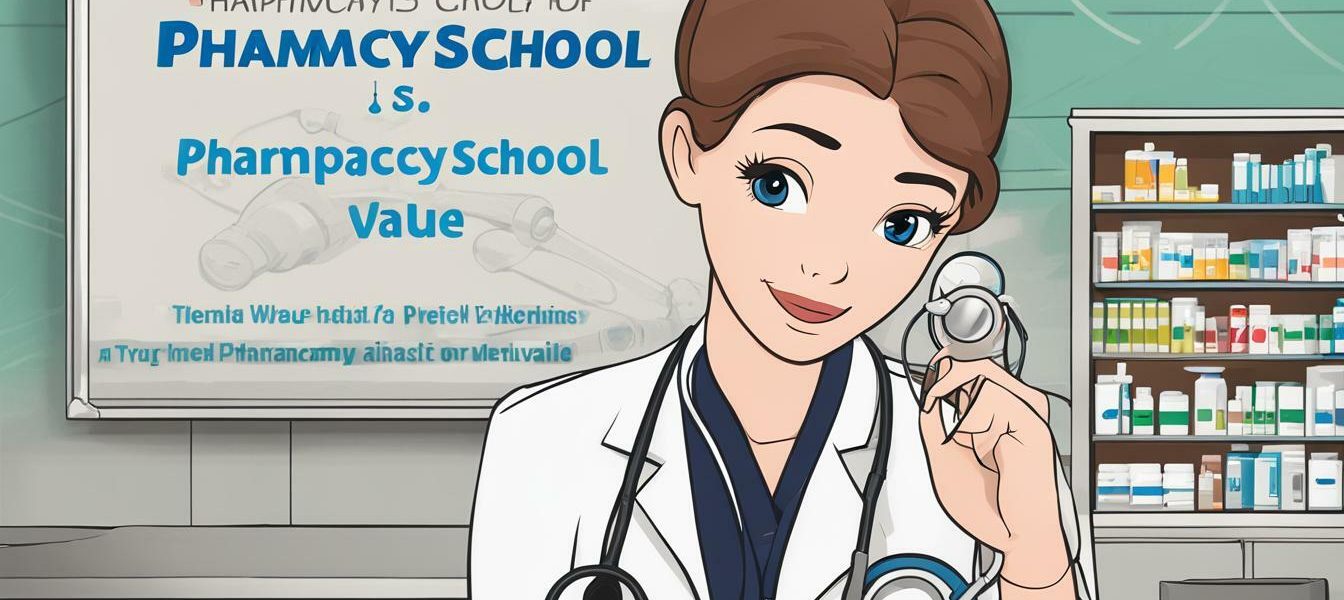
Do Pharmacists Go To Med School?
One of the common misconceptions about pharmacists is that they attend medical school. However, the educational path to becoming a pharmacist is distinct from that of a medical doctor.
Pharmacists play an essential role in healthcare as they work closely with patients to ensure that they receive the correct medications and dosages. To be able to do this, pharmacists need to have comprehensive knowledge of medications and their interactions, which they acquire through rigorous educational and training requirements.
Key Takeaways:
- Pharmacists do not attend medical school.
- Pharmacists pursue a Doctor of Pharmacy degree.
- Pharmacists play an integral role in patient care.
Pharmacist Education Requirements
If you’re interested in becoming a pharmacist, it’s important to understand the specific educational requirements. To become a licensed pharmacist in the United States, you’ll need to obtain a Doctor of Pharmacy (Pharm.D.) degree. This degree typically takes four years to complete.
Before applying to a Pharm.D. program, you’ll need to complete a set of prerequisite courses. These courses often include biology, chemistry, physics, and math. Some programs may also require coursework in English, social sciences, and humanities.
When searching for a Pharm.D. program, make sure to choose one that is accredited by the Accreditation Council for Pharmacy Education (ACPE). Accreditation ensures that the program meets high standards for educational quality and rigor.
Pharm.D. Curriculum
During your Pharm.D. program, you’ll take a variety of courses in subjects such as:
- Pharmacology
- Pharmaceutical chemistry
- Pharmaceutics (drug delivery systems)
- Pharmacy law and ethics
- Pharmacy practice (patient care, drug therapy management)
You’ll also complete experiential learning, which may include rotations in community pharmacies, hospitals, or other healthcare settings. These experiences give you hands-on training and help you develop clinical skills.
After completing your Pharm.D. program, you’ll need to pass the North American Pharmacist Licensure Examination (NAPLEX) and the Multistate Pharmacy Jurisprudence Exam (MPJE) to become licensed to practice as a pharmacist. Some states may also require additional exams or training.
Pharmacy School vs. Medical School
While both pharmacy school and medical school involve extensive education and training in healthcare, there are significant differences between the two paths.
The primary difference lies in the focus of the education. Medical school prepares students to become medical doctors, with a focus on diagnosing and treating illnesses. On the other hand, pharmacy school focuses on the study of medications, their effects on the body, and how to use them effectively to improve patient health outcomes.
Another difference is the duration of study. Medical school typically takes four years to complete, followed by residency training, while pharmacy school takes about six years to obtain a Doctor of Pharmacy (Pharm.D.) degree.
It’s important to note that while both pharmacists and doctors are involved in patient care, they perform distinct roles in the healthcare system. Pharmacists play a vital role in ensuring medication safety and effectiveness, providing drug information to healthcare providers and patients, and managing medication therapies. Doctors diagnose illnesses, prescribe medications, and provide overall medical care.
Interprofessional Collaboration
Despite their distinct roles, pharmacists and doctors work together closely in many healthcare settings to provide comprehensive patient care. Effective collaboration between the two professions is essential for promoting optimal medication use and improving patient outcomes.
Pharmacist Career Path
After completing the necessary education and training requirements, pharmacists have a wide range of career options available to them. Here are some of the most common:
| Pharmacist Career | Description |
|---|---|
| Community Pharmacist | Works in a retail pharmacy setting, provides medication counseling, and fills prescriptions for patients. |
| Hospital Pharmacist | Works in a hospital or healthcare facility, verifies medication orders, and prepares intravenous medications. |
| Pharmaceutical Industry | Works in research and development, sales, or regulatory affairs for a pharmaceutical company. |
| Academia | Teaches and conducts research in a college or university setting. |
| Government | Works in a public health agency or the military, providing medication and pharmaceutical expertise. |
In order to become a licensed pharmacist, individuals must complete internships and pass state licensure exams. The specifics of these requirements vary by state, so it is important to research the requirements of the intended state of practice.
Pharmacist Training
Just like any healthcare profession, pharmacists require continuous education and training to keep up with the latest developments and regulations. On-the-job training is a standard part of a pharmacist’s career, as they learn how to manage specific medications, interact with patients, and oversee drug dispensing.
Pharmacists can also pursue a range of continuing education and professional development opportunities, such as attending conferences and seminars, earning specialty certifications, or pursuing advanced degrees. These activities can enhance a pharmacist’s knowledge, skills, and career opportunities.
Some employers offer training programs to help pharmacists develop their skills further. For example, Walgreens Pharmacy offers a structured, year-long post-graduate residency program that allows pharmacists to gain practical experience across different healthcare settings. Similarly, CVS Pharmacy provides a tailored training program that focuses on developing pharmacists’ clinical skills and leadership abilities.
Pharmacists can also access a range of resources to stay updated on the latest developments and research in their field. For example, the American Pharmacists Association offers a variety of online courses and training modules, covering topics such as medication therapy management, immunization, and professional development.
Pharmacists and Medical School
One common misconception is that pharmacists attend medical school. However, this is not the case. Pharmacists and medical doctors have distinct educational paths and roles in the healthcare system.
While doctors diagnose and treat illnesses, pharmacists focus on medication therapy management and ensuring the safe and effective use of medications. Both professions collaborate to provide optimal patient care.
Pharmacists can work in a variety of settings, including community pharmacies, hospitals, research institutions, and the pharmaceutical industry. They also have the opportunity to specialize in areas such as oncology, infectious diseases, and psychiatry.
How to Become a Pharmacist
If you’re interested in pursuing a career as a pharmacist, here are the steps to get started:
- Focus on academic excellence: Good grades in prerequisite coursework such as biology and chemistry are important for gaining admission to a Pharm.D. program.
- Gain relevant experience: Apply for internships or volunteer at pharmacies or hospitals to gain hands-on experience in the field of pharmacy.
- Prepare for the PCAT: The Pharmacy College Admission Test (PCAT) is a standardized test that assesses applicants’ readiness for pharmacy school. Preparing for the test is crucial for success.
- Research and choose a Pharm.D. program: Look for programs accredited by the Accreditation Council for Pharmacy Education (ACPE) that align with your interests and career goals.
- Complete your Pharm.D. program: Pharm.D. programs typically take 4 years to complete and include coursework, laboratory work, and clinical rotations.
- Complete internships: After completing your educational requirements, gain practical experience through internships that provide hands-on training and a chance to network with experienced professionals.
- Pass state licensure exams: All states require pharmacists to be licensed, and passing the required exams is necessary to gain licensure.
Remember, becoming a pharmacist requires dedication and hard work, but it can lead to a rewarding and fulfilling career.
Financial Considerations in Pharmacy Education
Pursuing a Doctor of Pharmacy degree is a significant investment in your education and future career. It is important to understand the financial aspects of this decision and plan accordingly. Here are some key considerations:
| Tuition Costs | According to the American Association of Colleges of Pharmacy, the average annual tuition for a Pharm.D. program is around $34,000 for public institutions and $54,000 for private institutions. Keep in mind that tuition costs may vary depending on the location and type of program. |
|---|---|
| Scholarships and Grants | There are many scholarships and grants available for pharmacy students, ranging from those offered by individual schools to national organizations like the National Community Pharmacists Association. These can help offset the cost of tuition and other expenses. |
| Loans | Student loans are a common way to finance pharmacy education. It is important to research different loan options and understand the repayment terms before committing to a loan. The federal government offers Stafford and Grad PLUS loans, while private lenders also offer various loan options. |
| Salary Expectations | The average salary for pharmacists in the United States is around $128,000 per year, according to the Bureau of Labor Statistics. However, this may vary depending on factors such as location, experience, and sector of pharmacy. |
It is important to keep in mind that pursuing a Pharm.D. degree may involve taking on significant student debt. However, students who plan carefully, research scholarship and grant opportunities, and choose their program wisely may be able to manage their debt effectively.
There are also many resources available for financial assistance, such as loan forgiveness programs and income-driven repayment plans. It is important to explore all options and make informed decisions when it comes to financing your pharmacy education.
Advantages and Challenges in the Pharmacy Profession
The pharmacy profession offers many advantages that make it a rewarding career choice. One of the most significant benefits of being a pharmacist is job stability. The demand for pharmacists remains strong, and the profession is expected to grow steadily over the next decade. Additionally, pharmacists have numerous opportunities for specialization and can work in a variety of settings, including community pharmacies, hospitals, and research institutions.
Another advantage of being a pharmacist is the opportunity to make a positive impact on patient care. Pharmacists play a critical role in ensuring that patients receive the appropriate medications and that they understand how to take them correctly. They also work closely with other healthcare professionals to manage chronic conditions and prevent drug interactions.
However, like any profession, pharmacy also presents challenges. One of the most significant challenges is dealing with insurance issues. Many patients struggle to afford their medications, and pharmacists are often tasked with finding affordable alternatives or working with insurance companies to secure coverage. Pharmacists also work long hours, particularly those who work in hospitals or retail settings.
Despite these challenges, many pharmacists find their work personally fulfilling and enjoy the opportunity to improve the health and well-being of their patients. With the right combination of education, experience, and personal qualities, a career in pharmacy can be an excellent choice for those interested in healthcare and helping others.
Conclusion
In conclusion, pharmacists do not attend medical school but instead pursue a Doctor of Pharmacy degree. The educational requirements for becoming a pharmacist include obtaining a Pharm.D. degree from an ACPE-accredited program and completing prerequisite coursework. While pharmacists and doctors both work in the healthcare field, their roles and responsibilities are distinct.
There are various career opportunities available to pharmacists, including working in community pharmacies, hospitals, research institutions, and the pharmaceutical industry. On-the-job training and continuing education are important for pharmacists to stay up-to-date with new medications, technologies, and regulations.
Financial considerations are also important to keep in mind when pursuing a Pharm.D. degree, including tuition costs, scholarships, loans, and potential salary expectations for pharmacists. However, the pharmacy profession offers many benefits and rewards, including job stability, opportunities for specialization, and the ability to make a positive impact on patient care.
Overall, it is important to recognize the unique roles and contributions of pharmacists in the healthcare system. Effective interprofessional collaboration between pharmacists and doctors is vital for providing optimal patient care. If you are interested in pursuing a career as a pharmacist, make sure to research and choose the right Pharm.D. program, obtain relevant experience, and prepare for the PCAT.



